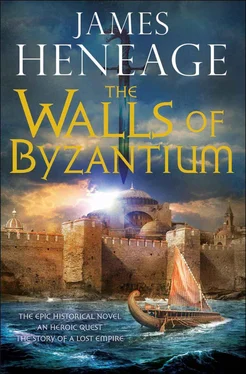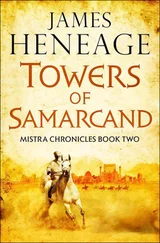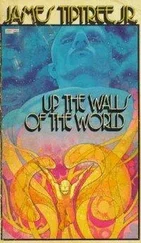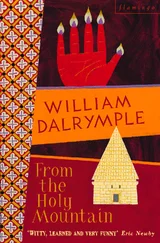James Heneage - The Walls of Byzantium
Здесь есть возможность читать онлайн «James Heneage - The Walls of Byzantium» весь текст электронной книги совершенно бесплатно (целиком полную версию без сокращений). В некоторых случаях можно слушать аудио, скачать через торрент в формате fb2 и присутствует краткое содержание. Жанр: Исторические приключения, на английском языке. Описание произведения, (предисловие) а так же отзывы посетителей доступны на портале библиотеки ЛибКат.
- Название:The Walls of Byzantium
- Автор:
- Жанр:
- Год:неизвестен
- ISBN:нет данных
- Рейтинг книги:3 / 5. Голосов: 1
-
Избранное:Добавить в избранное
- Отзывы:
-
Ваша оценка:
- 60
- 1
- 2
- 3
- 4
- 5
The Walls of Byzantium: краткое содержание, описание и аннотация
Предлагаем к чтению аннотацию, описание, краткое содержание или предисловие (зависит от того, что написал сам автор книги «The Walls of Byzantium»). Если вы не нашли необходимую информацию о книге — напишите в комментариях, мы постараемся отыскать её.
The Walls of Byzantium — читать онлайн бесплатно полную книгу (весь текст) целиком
Ниже представлен текст книги, разбитый по страницам. Система сохранения места последней прочитанной страницы, позволяет с удобством читать онлайн бесплатно книгу «The Walls of Byzantium», без необходимости каждый раз заново искать на чём Вы остановились. Поставьте закладку, и сможете в любой момент перейти на страницу, на которой закончили чтение.
Интервал:
Закладка:
The fourth empire was that of Tamerlane, or ‘Timur-thelame’ as he was called at that time. Tamerlane was a Mongol, a successor to Genghis Khan who had laid waste much of the east two centuries before. His successor, Tsubodai, had brought the hordes to the gates of Europe and might have gone further were it not for the death of the Mongol Khan Ogedai which forced him to return home. Like Genghis, Tamerlane managed to unite the Mongol hordes and shape them into a terrifying and unstoppable instrument of terror. By this time, Tamerlane had swept across much of Asia, destroying everything in his path. Whether he would come west to take on Bayezid and, by doing so, relieve the pressure on Europe or turn east was the question being asked by every Christian king.
Into this mix came invention, the invention of cannon big enough to bring down the walls of Constantinople. Cannon had been around for a century at least but none were yet big enough to destroy walls of the size of Constantinople’s. There’s no evidence that Venice built such cannon for the Turks, although its Arsenale certainly had a cannon foundry. The Arsenale was also beginning to mass-produce ships using assembly line methods never used before. They could well have been building ships for the Ottomans. Venice was a pragmatic republic, ready to profit by any means, as demonstrated by its behaviour in the Fourth Crusade.
The Walls of Byzantium contains a cast of characters most of whom actually existed. The Laskaris family were indeed Protostators (sort of Prime Ministers) of Mistra. Their house can still be seen there today. The Mamonas family were Archons of Monemvasia. Theodore was the Despot of Mistra at this time and Bartolomea was his Despoena. These days, the title ‘Despot’ has rather negative conotations. In fact the Despots of Mistra were invariably good, cultured men, usually the brother or son of the Emperor in Constantinople, who ruled well and embellished their magnificent capital in the Peloponnese. Marchese Longo existed on Chios and was a leader of the Mahona at the time and he did have a palace at Sklavia, although the evidence for it there is difficult to find. Fiorenza is fictional.
Bayezid’s son Suleyman existed as did his brothers Mehmed and Musa and his grandmother, the Valide Sultan Gulcicek. The brothers’ rivalry was very real (Bayezid having murdered his own at the time of his accession), and ultimately would lead to an Ottoman civil war, the theme of the third book in the chronicles.
Yakub-Bey was chief of the gazi Germiyan tribe of central Anatolia and would have been a reluctant ally of Bayezid, in spite of the Sultan’s marriage to his sister Devlet Hatun. Yakub’s beylik had been overrun by Bayezid as recently as the 1380’s and he himself had been imprisoned. The Karamanids were the Germiyans’ eastern neighbours and rivals and were yet to fall under the Ottoman yoke.
As to the events described, the city of Mistra was besieged by the Ottomans in the middle of 1390s but not taken. The Archon of Monemvasia had rebelled against the Despot some years beforehand so was quite likely not to have come to the city’s aid. The meeting at Serres took place in 1392 and the Emperor Manuel fled when he thought that his life was in danger. Prince Stefan of Serbia was also there as an Ottoman vassal and his sister, Olivera Despina, was one of Bayezid’s wives.
In Nicopolis was one of the most important battles in history. The crusade that led to the battle was largely financed by the wealthy Duke of Burgundy whose son, the Comte de Nevers, became its nominal leader. The Christian army was said to be huge, could ‘hold up the sky with its lances’. But it was also complacent and so certain of victory that jousting tournaments were held on the eve of battle. The battle that followed was as terrible and bloody as described, as was the aftermath when two thousand Christian Knights were slaughtered by Bayezid, many by his elderly ulema.
Nicopolis sent shock waves through Europe and, from that moment on, the Kings of Christendom truly feared that the Ottomans might overrun them. There were repeated efforts to raise another crusade to come to the aid of Constantinople which Bayezid put under more or less constant siege from 1394 onwards, blockading it with his new navy. But the big obstacle was the union between the western Church of Rome and the eastern Orthodox Church. Ridiculous liturgical differences, such as how the sign of the Cross should be made, had to be discussed and agreed on before the Churches could be united and the Pope sanction another crusade. Plethon, as I say in the book, was an ardent proponent of Church union as a way to save the Empire and was to play an important part in the later Council of Florence at which it was agreed.
In the final scene of this first book, I describe ‘Greek fire’. There has been much debate as to how this Byzantine secret weapon was made and no one knows for sure. What is known is that Greek fire played a decisive part in the success of the Byzantine Empire from around the eighth century onwards and was so vital to state security that only the Emperor and a handful of others knew how it was created.
At the heart of The Mistra Chronicles are the twin cities of Mistra and Monemevasia in the Greek Peloponnese. I first saw Monemvasia at sunset from the deck of a sailing boat and it was love at first sight. I spent two days exploring the maze of its lower town and the ruins of the Goulas above. Then I went to Mistra and fell in love all over again. Both cities can be visited today. Mistra is about three hours from Athens airport and Monemvasia, which has been largely rebuilt as a Byzantine city, is an hour on from Mistra. Monemvasia has some good boutique hotels and a swim from the rocks outside the Portello (where Joseph met his fate) is compulsory.
For those wanting more general knowledge about the world as it was at this time, I can recommend John Julius Norwich’s Short History of Byzantium , Judith Herrin’s Byzantium , Steven Runciman’s Lost Capital of Byzantium and The Last Byzantine Renaissance and, for the most evocative overview of the Ottoman Empire, Jason Goodwin’s magisterial Lords of the Horizons .
The story of Luke, Anna, Zoe and the clashing empires that surround them will continue with the next book in the Mistra Chronicle series, The Towers of Samarcand .
Интервал:
Закладка:
Похожие книги на «The Walls of Byzantium»
Представляем Вашему вниманию похожие книги на «The Walls of Byzantium» списком для выбора. Мы отобрали схожую по названию и смыслу литературу в надежде предоставить читателям больше вариантов отыскать новые, интересные, ещё непрочитанные произведения.
Обсуждение, отзывы о книге «The Walls of Byzantium» и просто собственные мнения читателей. Оставьте ваши комментарии, напишите, что Вы думаете о произведении, его смысле или главных героях. Укажите что конкретно понравилось, а что нет, и почему Вы так считаете.










